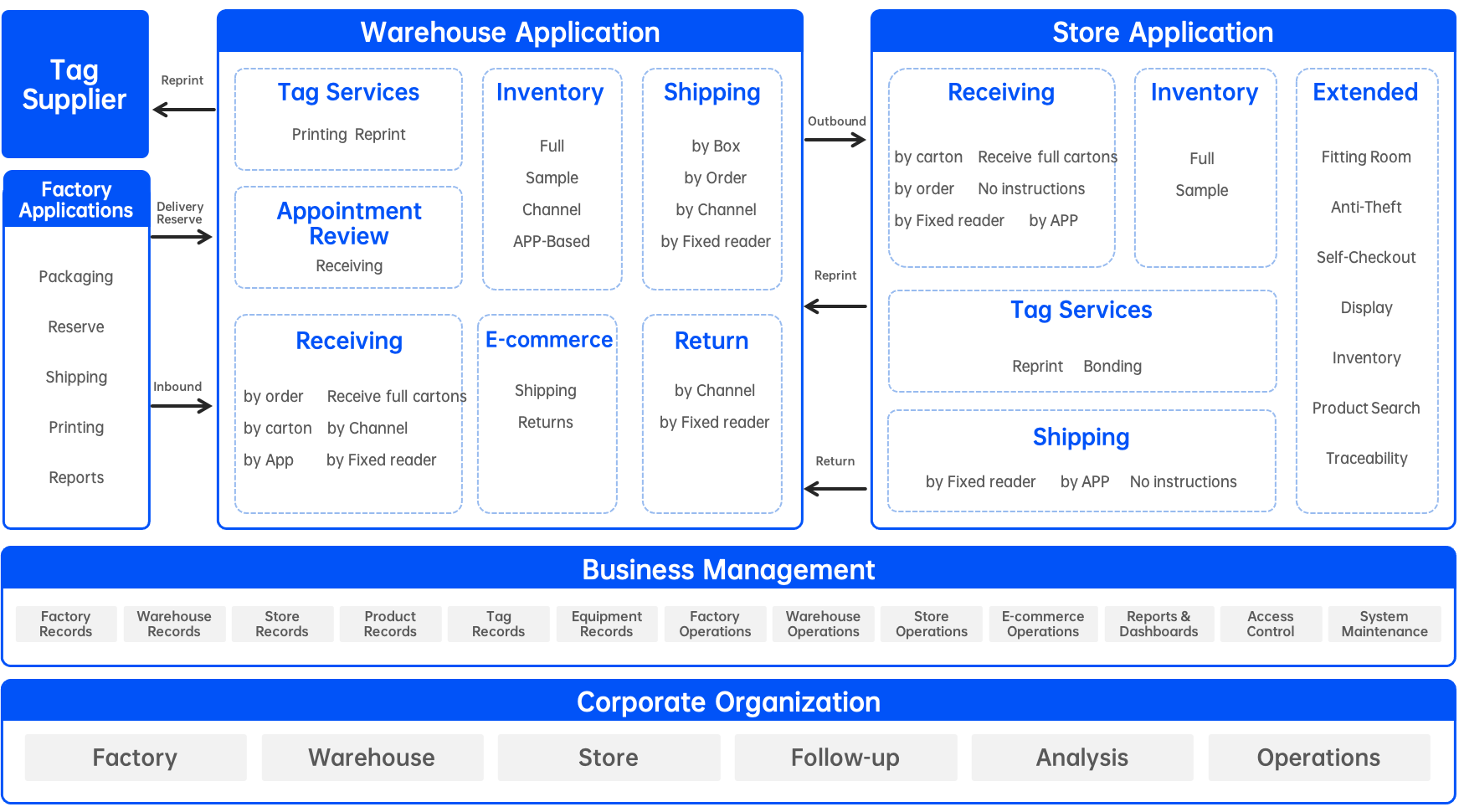Business Challenges
Massive SKUs complicate inventory management.
Information gaps hinder operational efficiency.
Low data reliability disrupts end-to-end collaboration.
Store operations need refinement.
Massive SKUs complicate inventory management.
Fast-fashion brands release new items weekly, resulting in vast SKUs with short lifecycles. Managing multiple categories and batches strains turnover, causing simultaneous overstock and stockouts. Manual counts are inefficient, hindering dynamic adjustments—smart systems are needed for real-time monitoring.
Information gaps hinder operational efficiency.
Current workflows rely on manual data entry (e.g., barcode scans or forms), which is inefficient and error-prone. Data silos disrupt cross-department collaboration, slow decision-making, and weaken market responsiveness.
Low data reliability disrupts end-to-end collaboration.
Data is scattered across inconsistent systems from production to sales, hindering unified analysis. Without a centralized data platform, key decisions like sales forecasting and supply chain adjustments lack reliable support, limiting data-driven potential.
Store operations need refinement.
Consumer demands are diversifying, yet stores rely on outdated management—like failing to sync offline and online inventory in real time. Digital tools can redefine staff, stock, and space interactions, enabling personalized service to boost repeat purchases.
Solutions
Unique Product Identity & Traceability
Link RFID tags to product data for accuracy and traceability.

End-to-End Data Infrastructure
Deploy RFID devices across production, warehousing, and retail for seamless coverage.

Smart Data Integration
Develop RFID systems for tag, warehouse, and store management, integrated with existing platforms.


Value Delivered
Factory:Data-driven workflows reduce stockouts and overstock.
Warehouse:Streamline inventory checks and reduce manual work.
Store: Faster operations save time and labor.

Omnichannel:Unify online and offline sales.
Supply Chain:Agile response to market changes.
D2C:Build trust through product traceability.

Consumer Behavior: Analyze RFID data for preferences.
AI Decisions:Enhance precision in planning.
Trend Leadership:Innovate for unique customer experiences.














